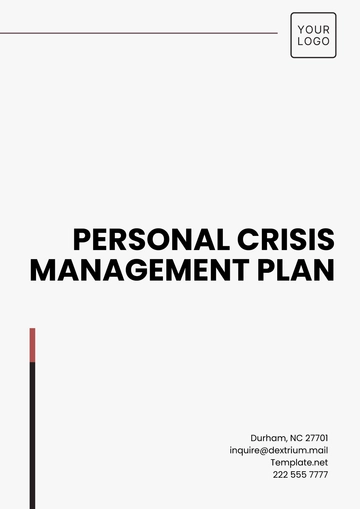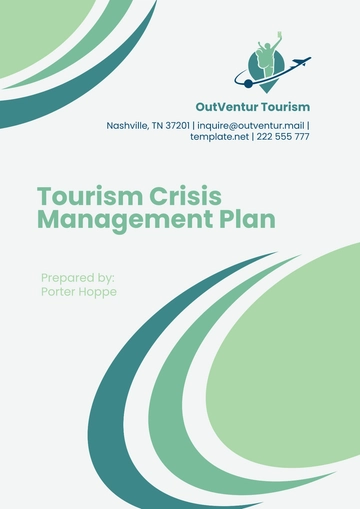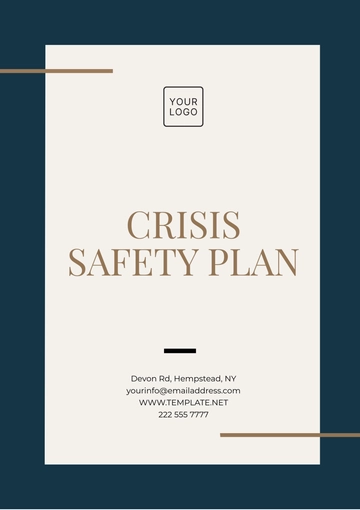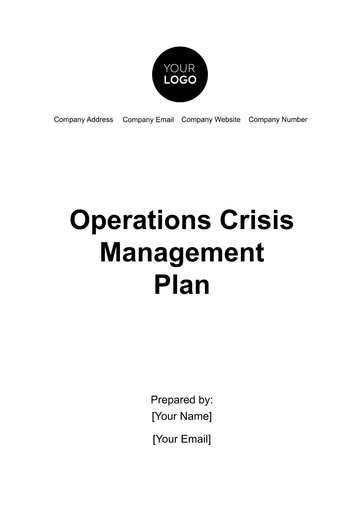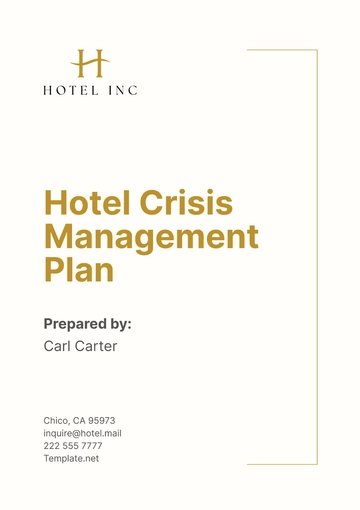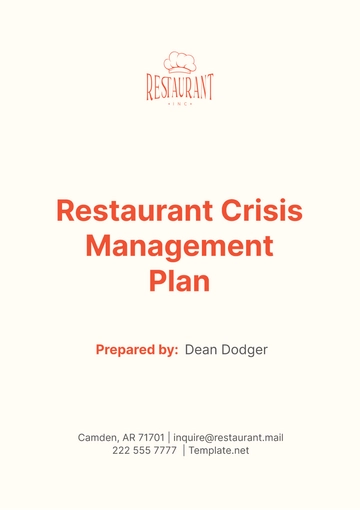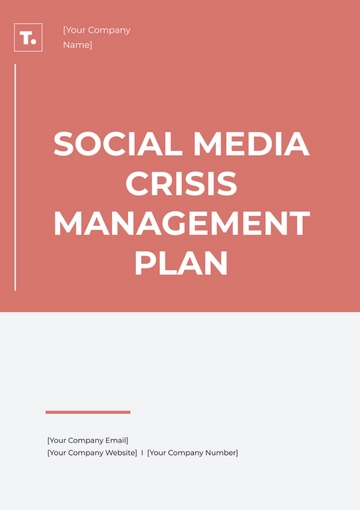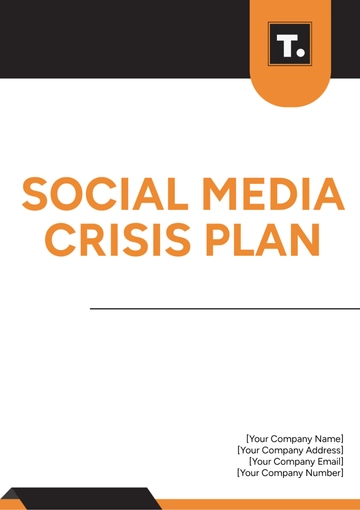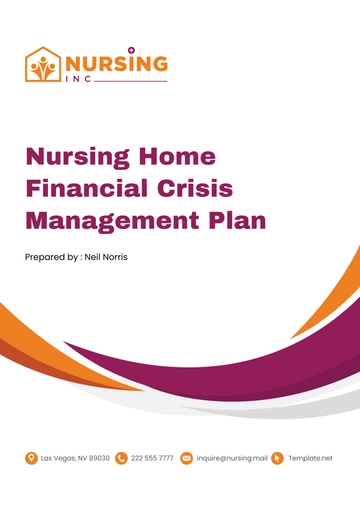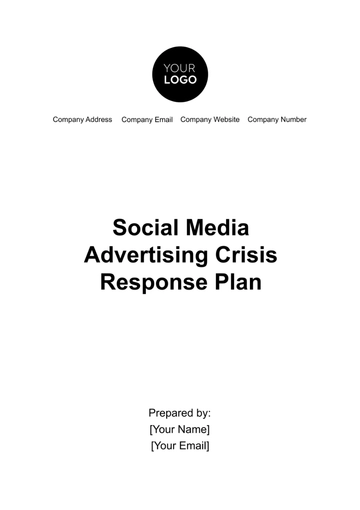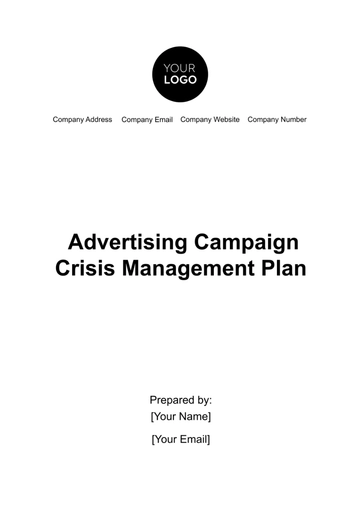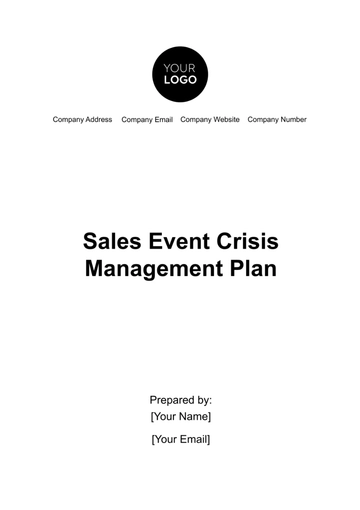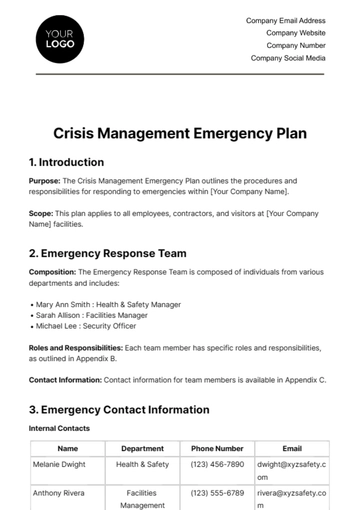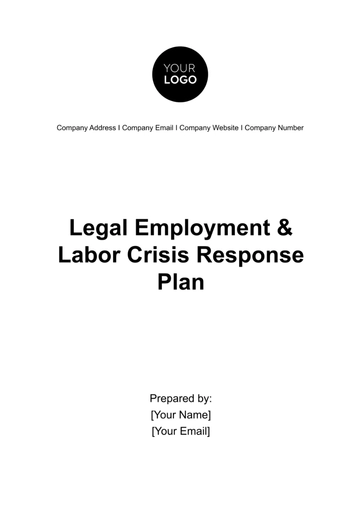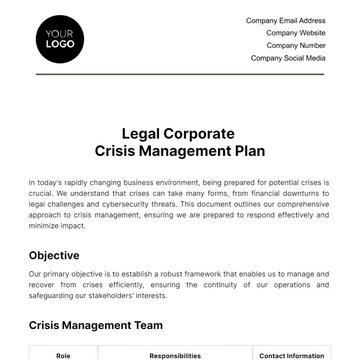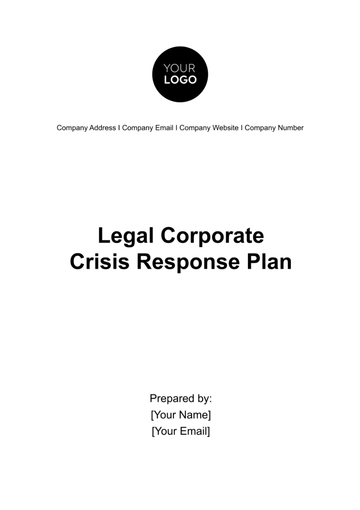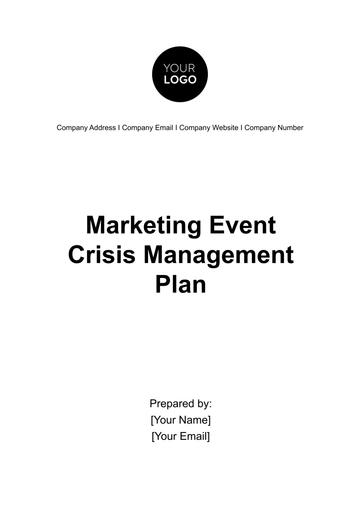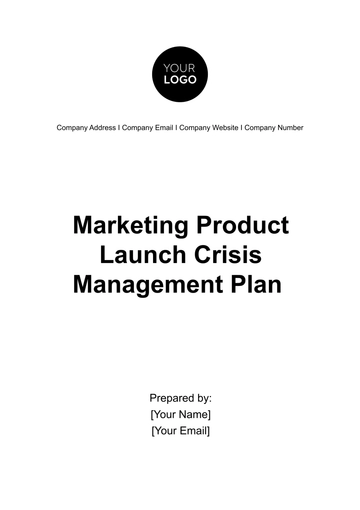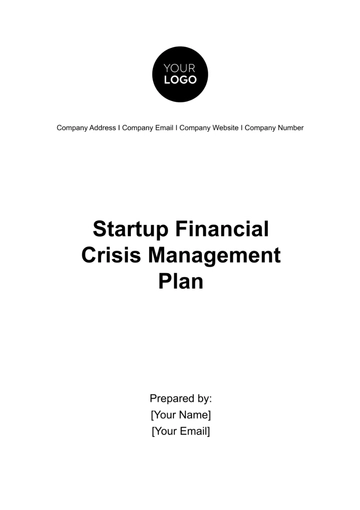Free Social Media Crisis Management Plan
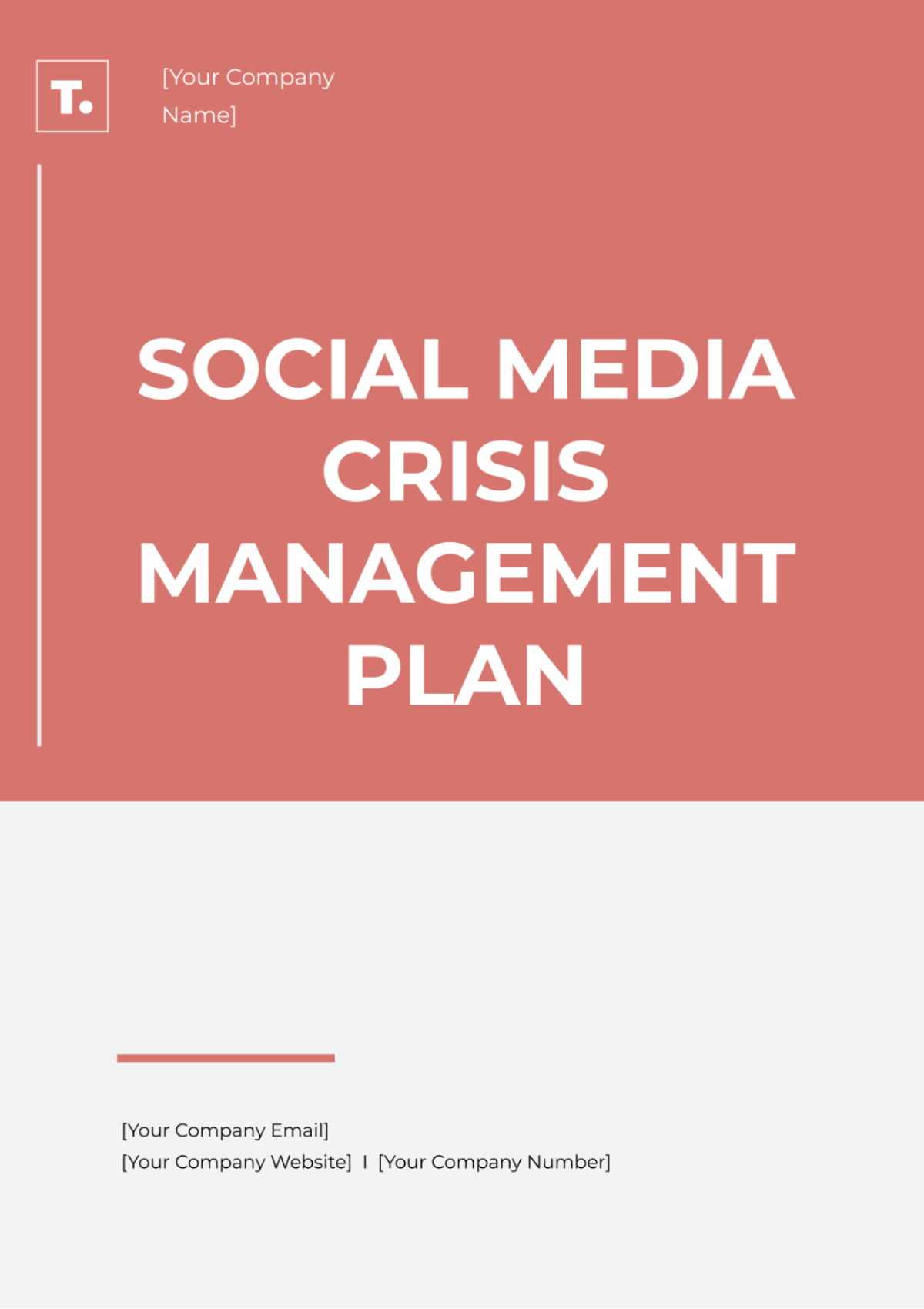
I. Introduction
In today's digital age, social media plays a crucial role in shaping public perception of [BRAND/ORGANIZATION]. However, with the power of social media comes the potential for [NEGATIVE PUBLICITY/CRISIS] to arise swiftly and escalate rapidly. This Social Media Crisis Management Plan is designed to equip our team with strategies and procedures to effectively address and mitigate [NEGATIVE SENTIMENTS/CRISIS SITUATIONS] on social media platforms.
II. Identification and Monitoring
Establish a dedicated team responsible for monitoring [SOCIAL MEDIA CHANNELS/BRAND MENTIONS] round the clock.
Utilize social media listening tools to proactively identify [POTENTIAL CRISES/NEGATIVE SENTIMENTS] and trends.
Define key triggers and indicators that signal the onset of a social media [CRISIS/REPUTATIONAL THREAT].
III. Crisis Response Roles and Responsibilities
Role | Responsibilities |
|---|---|
Social Media Manager | Oversee crisis response strategy, coordinate with internal teams, approve messaging, monitor social channels |
Public Relations | Draft press releases, liaise with media outlets, manage external communications |
Legal Counsel | Provide guidance on legal implications, review messaging for compliance |
Customer Support | Respond to customer inquiries, provide support and assistance |
Executive Leadership | Provide strategic direction, authorize major decisions and actions during crisis |
IV. Escalation Protocol
Implement a clear escalation protocol outlining the chain of command and communication channels in the event of a social media [CRISIS/EMERGENCY].
Designate specific roles and responsibilities for team members during [CRISIS RESPONSE/SOCIAL MEDIA EMERGENCIES].
Ensure all team members are trained in [CRISIS MANAGEMENT PROTOCOLS/RESPONSE PROCEDURES].
V. Social Media Crisis Monitoring Matrix
Social Media Channel | Monitoring Frequency | Key Triggers/Indicators |
|---|---|---|
Real-time | Sudden increase in negative mentions, trending hashtags related to crisis | |
Hourly | Spike in negative comments on posts, increase in messages to page inbox | |
Daily | Surge in negative comments on posts, decrease in engagement metrics | |
Weekly | Rise in negative articles or comments, significant drop in company page followers | |
YouTube | Real-time | Surge in dislikes, increase in negative comments on videos |
VI. Assessment and Analysis
Conduct a swift and thorough assessment of the [SITUATION/CRISIS] to determine the scope and severity of the [ISSUE/THREAT].
Analyze the root causes and underlying [FACTORS/ISSUES] contributing to the [CRISIS/NEGATIVE SENTIMENTS].
Gather data and feedback from [SOCIAL MEDIA ANALYTICS/STAKEHOLDERS] to inform decision-making.
VII. Response Strategy
Develop pre-approved messaging templates for different types of [CRISES/NEGATIVE PUBLICITY], tailored to each social media platform.
Emphasize transparency, empathy, and accountability in all [COMMUNICATIONS/RESPONSES].
Monitor and respond to comments and inquiries in a timely manner, while adhering to [BRAND VOICE/TONE GUIDELINES].
VIII. Crisis Resolution
Implement strategic actions to address the [CRISIS/ISSUE] and mitigate its impact on the [BRAND REPUTATION/ORGANIZATION].
Collaborate with relevant internal stakeholders, such as [PR/LEGAL/CUSTOMER SUPPORT TEAMS], to coordinate response efforts.
Provide regular updates and progress reports to [STAKEHOLDERS/PUBLIC] as the [CRISIS/ISSUE] unfolds.
IX. Post-Crisis Evaluation
Conduct a thorough post-mortem analysis to evaluate the effectiveness of the [CRISIS MANAGEMENT RESPONSE/STRATEGIES].
Identify lessons learned and areas for improvement in the [CRISIS MANAGEMENT PROCESS/STRATEGIC RESPONSE].
Implement corrective actions and updates to the [CRISIS MANAGEMENT PLAN/STRATEGY] based on the findings of the evaluation.
X. Training and Preparedness
Provide ongoing training and development opportunities for team members to enhance their [CRISIS MANAGEMENT SKILLS/CAPABILITIES].
Conduct regular crisis simulation exercises to test the effectiveness of the [CRISIS MANAGEMENT PLAN/RESPONSE STRATEGIES] and ensure readiness for real-life scenarios.
Stay informed of emerging trends and developments in [SOCIAL MEDIA CRISIS MANAGEMENT/REPUTATION MANAGEMENT] to continuously refine and improve our approach.
XI. Conclusion
In conclusion, this Social Media Crisis Management Plan equips [ORGANIZATION/BRAND] with a robust framework for addressing and mitigating negative publicity on social media platforms. By implementing proactive strategies such as [IDENTIFICATION/MONITORING] and clear escalation protocols, we can effectively manage crises as they arise. Regular post-crisis evaluations and training ensure continuous improvement and readiness for future challenges. With this proactive and resilient approach, we safeguard the reputation and integrity of [ORGANIZATION/BRAND] in the digital landscape.
- 100% Customizable, free editor
- Access 1 Million+ Templates, photo’s & graphics
- Download or share as a template
- Click and replace photos, graphics, text, backgrounds
- Resize, crop, AI write & more
- Access advanced editor
Handle crises with confidence using Template.net's Social Media Crisis Management Plan Template. This essential resource is fully editable and customizable, enabling swift response strategies tailored to your brand. Adjust and refine your plan effortlessly with our Ai Editor Tool, ensuring a proactive approach to safeguarding your online reputation.
You may also like
- Finance Plan
- Construction Plan
- Sales Plan
- Development Plan
- Career Plan
- Budget Plan
- HR Plan
- Education Plan
- Transition Plan
- Work Plan
- Training Plan
- Communication Plan
- Operation Plan
- Health And Safety Plan
- Strategy Plan
- Professional Development Plan
- Advertising Plan
- Risk Management Plan
- Restaurant Plan
- School Plan
- Nursing Home Patient Care Plan
- Nursing Care Plan
- Plan Event
- Startup Plan
- Social Media Plan
- Staffing Plan
- Annual Plan
- Content Plan
- Payment Plan
- Implementation Plan
- Hotel Plan
- Workout Plan
- Accounting Plan
- Campaign Plan
- Essay Plan
- 30 60 90 Day Plan
- Research Plan
- Recruitment Plan
- 90 Day Plan
- Quarterly Plan
- Emergency Plan
- 5 Year Plan
- Gym Plan
- Personal Plan
- IT and Software Plan
- Treatment Plan
- Real Estate Plan
- Law Firm Plan
- Healthcare Plan
- Improvement Plan
- Media Plan
- 5 Year Business Plan
- Learning Plan
- Marketing Campaign Plan
- Travel Agency Plan
- Cleaning Services Plan
- Interior Design Plan
- Performance Plan
- PR Plan
- Birth Plan
- Life Plan
- SEO Plan
- Disaster Recovery Plan
- Continuity Plan
- Launch Plan
- Legal Plan
- Behavior Plan
- Performance Improvement Plan
- Salon Plan
- Security Plan
- Security Management Plan
- Employee Development Plan
- Quality Plan
- Service Improvement Plan
- Growth Plan
- Incident Response Plan
- Basketball Plan
- Emergency Action Plan
- Product Launch Plan
- Spa Plan
- Employee Training Plan
- Data Analysis Plan
- Employee Action Plan
- Territory Plan
- Audit Plan
- Classroom Plan
- Activity Plan
- Parenting Plan
- Care Plan
- Project Execution Plan
- Exercise Plan
- Internship Plan
- Software Development Plan
- Continuous Improvement Plan
- Leave Plan
- 90 Day Sales Plan
- Advertising Agency Plan
- Employee Transition Plan
- Smart Action Plan
- Workplace Safety Plan
- Behavior Change Plan
- Contingency Plan
- Continuity of Operations Plan
- Health Plan
- Quality Control Plan
- Self Plan
- Sports Development Plan
- Change Management Plan
- Ecommerce Plan
- Personal Financial Plan
- Process Improvement Plan
- 30-60-90 Day Sales Plan
- Crisis Management Plan
- Engagement Plan
- Execution Plan
- Pandemic Plan
- Quality Assurance Plan
- Service Continuity Plan
- Agile Project Plan
- Fundraising Plan
- Job Transition Plan
- Asset Maintenance Plan
- Maintenance Plan
- Software Test Plan
- Staff Training and Development Plan
- 3 Year Plan
- Brand Activation Plan
- Release Plan
- Resource Plan
- Risk Mitigation Plan
- Teacher Plan
- 30 60 90 Day Plan for New Manager
- Food Safety Plan
- Food Truck Plan
- Hiring Plan
- Quality Management Plan
- Wellness Plan
- Behavior Intervention Plan
- Bonus Plan
- Investment Plan
- Maternity Leave Plan
- Pandemic Response Plan
- Succession Planning
- Coaching Plan
- Configuration Management Plan
- Remote Work Plan
- Self Care Plan
- Teaching Plan
- 100-Day Plan
- HACCP Plan
- Student Plan
- Sustainability Plan
- 30 60 90 Day Plan for Interview
- Access Plan
- Site Specific Safety Plan
